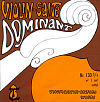Choosing the right strings
|
|
|
|
| Choosing the right strings |
|
|
|
The importance of strings |
|
|
| The strings are vital to the violin's sound production, and just as the construction of an instrument affects the sound quality, so does the type of string. You can see more about the main types on the right.
Every make and type of string has its good and not-so-good points. We've chosen these particular brands because they're the most popular with musicians. They're also the ones we use ourselves when playing music with our friends.
Use the chart to find out more about string makes, the type of music they suit, the materials and the good points - plus other things you might wish to consider when choosing. |
|
|
| Make |
Good points |
Think about... |

Dominant |
Suits all styles / players
Can express subtlety and warmth. Relatively unaffected by temperature and humidity, with stable tuning. Bright and responsive, good string to start experimenting with. Used by Aly Bain, Zukerman, Kennedy - on very expensive instruments! Leading brand. |
Tone is not as complex as gut strings. A little "edgy" and metallic to start with, but the sound warms up within a week |
| (Pirastro Tonica)
Synthetic core |
Suits all styles / players
Can "warm up" an edgy, harsh-sounding violin so often used on inexpensive violins. Warmer, fuller sound than Dominants, with a short "break-in" time |
Might not be responsive enough to bring the best out of an expensive violin |

ProArte
Synthetic core |
Ideal for early music, older instruments, experienced players who want a smooth, complex sound
Can "tone down" an edgy, harsh-sounding violin |
Warmer, fuller sound than Dominants but not quite as quick to respond |

Helicore
Metal core |
Suits Country, folk, bluegrass, amplified music, very good for small-size instruments
Smooth and quick response and a simple, direct, pure, true sound. Tuning very stable and strings quick to play-in |
Not much depth of tone - too clean and bright for some music. A "clear, focussed" sound which may sound thin on some instruments |
| Pirastro Eudoxa
Gut core |
Suits Early Music well, good on more expensive instruments
A popular string with a refined, smooth, complex, mellow sound. Can go loud |
Gut core means tuning is at mercy of changes in temperature and humidity. Can sound "fuzzy" and sound can break up at speed |
|
|
|
Fast Facts
| Strings used to be made of gut - not from cats as some people think, but the intestines of sheep
Gut strings were standard right up until the beginning of the 20th century, when recording techniques were still in their infancy. Because the microphones weren't very sensitive, steel strings became popular. Later on in the 20th century with the invention of plastics, new synthetic strings made of nylon became available
All three types of string are still available and still used.
The choice depends on personal preference, the interaction with the sound of the instrument, and the type of music being played |
|
|
|
|
|

